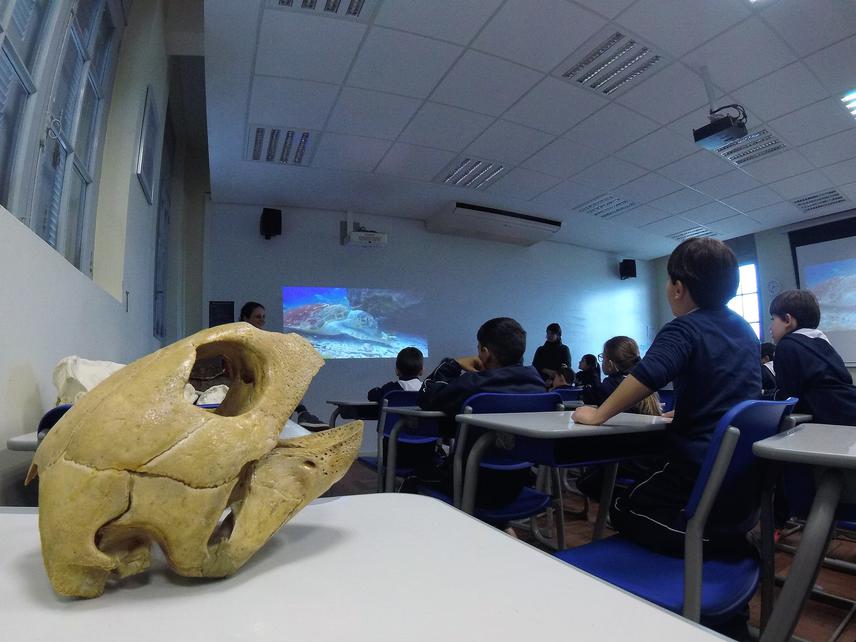Luciana Medeiros Silva
Assess the occurrence of bottleneck events in Brazilian loggerhead populations and evaluate if the genetic characteristics affects ecology and demography parameters.

Environmental education of children from the local community
The Southwestern Atlantic Ocean represents an important foraging and development ground of loggerhead sea turtles at different life stages, and also holds extensive commercial fisheries. A significant overlap between fisheries and sea turtles distribution probably explains the high fishing-related mortality and the decline of several loggerhead turtle populations. However, the effects of these activities on the demographic and genetic structure of loggerheads populations throughout generations remain unclear.
Furthermore, sea turtles species show high growth rate variability over time and among turtles. Intraspecific variability is an important ecological feature for the maintenance of species coexistence and the dynamics of communities because reduces intra and interspecific competition or predation. Co-occurring individuals have a more specialized behaviour in shared habitats, selecting different food sources even among individuals of a given size and sex. These individual differences in growth may be related to several factors such as water temperature, food resources availability and the native origin. In this context, detailed studies on the genetic composition of mixed stocks and the characterization of foraging and habitat use of loggerheads are needed to determine which factors affect the growth dynamics of sea turtles and how these characteristics shape their complex life history. By analysing genetic markers, we will assess if the reduction in population sizes has caused inbreeding and loss of genetic diversity of loggerhead turtles along the Brazilian coast. Additionally, this work will also contribute towards a better understanding of how the genetic composition of loggerhead sea turtles affects trophic behaviour (i.e. feeding and habitat use) and demographic parameters (i.e. growth rates and age at sexual maturity), by combining molecular techniques with stable isotope analysis and skeletochronology.